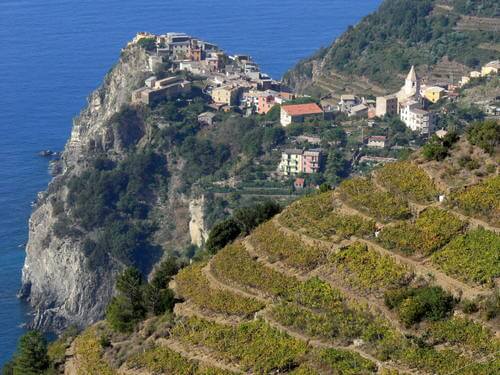In 1997, UNESCO (United Nations Educational, Scientific and Cultural Organization) inscribed the Gulf of Poets in its list of World Heritage Sites. Specifically, the places that were included in the prestigious list are Portovenere, Cinque Terre, and the Islands of Palmaria, Tino and Tinetto.
The World Heritage Committee, composed of 21 UNESCO member states, decided to inscribe this site
“considering that the eastern Ligurian Riviera between Cinque Terre and Portovenere is a cultural site of outstanding value, representing the harmonious interaction between people and nature to produce a landscape of exceptional scenic quality that illustrates a traditional way of life that has existed for a thousand years and continues to play an important socio-economic role in the life of the community”.
In other words, the Ligurian coast between Cinque Terre and Portovenere is a cultural landscape of great scenic and cultural value. The layout and disposition of the small towns and the shaping of the surrounding landscape, overcoming the disadvantages of a steep, uneven terrain, encapsulate the continuous history of human settlement in this region over the past millennium.

In particular, the UNESCO Selection Criteria for inscription of Portovenere, its islands and the Cinque Terre are:
- (ii) to exhibit an important interchange of human values, over a span of time or within a cultural area of the world, on developments in architecture or technology, monumental arts, town-planning or landscape design;
- (iv) to be an outstanding example of a type of building, architectural or technological ensemble or landscape which illustrates (a) significant stage(s) in human history;
- (v) to be an outstanding example of a traditional human settlement, land-use, or sea-use which is representative of a culture (or cultures), or human interaction with the environment especially when it has become vulnerable under the impact of irreversible change.
Discover more from Discover Portovenere Blog
Subscribe to get the latest posts sent to your email.
2 Comments